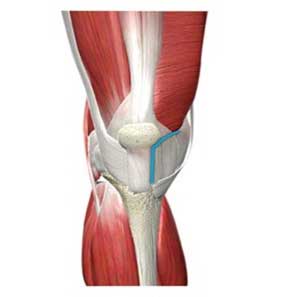The Ultimate Guide To PAINLESS & MINIMAL-STITCH KNEE REPLACEMENT
Painless and minimal-stitch knee replacement surgery is the latest advancement in knee replacement surgery technique. This new technique is helping patients
- Have less discomfort during and after surgery
- Offers faster recovery post-surgery
- In-fact patients start walking within hours of the surgery
- Patient can walk without any support in a few days.
This Surgery is better than conventional Knee Replacement Surgery!
Knee substitution has ended up being an exceptionally fruitful and groundbreaking medical procedure for older individuals who experience the ill effects of serious knee torment and for the individuals who experience the ill effects of joint pain. In any case, in spite of the advantages offered by knee substitution medical procedure. Patients are frequently suspicious of experiencing knee medical procedure as they are uncertain on the off chance that they will probably walk torment free after medical procedure or will the torment reoccur. The total recuperation time will be long and exhausting requiring a great deal of orthopedic and physio visits.
Effortless and insignificant line complete knee substitution medical procedure beats these worries as the medical procedure does not include any muscle cut nor does the patient need a general anesthesia. Essentially improving the result of the medical procedure.
This is how this Knee surgery is virtually Painless?
Knee replacement patients generally face discomfort during and after surgery. This is due to the use of general epidural anaesthesia. The use of Epidural helps in blocking the pain in the leg during the knee surgery. However, the drawback being, that it anaesthetises both the leg even if a single leg is operated. The effect of this epidural last for longer time and leaves numbness in both legs. The patient can only walk once the numbness has subsided.
| Dr. Shailendra patil Thane |
However, Painless and Minimal-Stitch knee replacement surgery, does not require the use of an epidural anaesthesia. Instead it uses a technique known as the adductor canal block. To help you understand this better, the adductor canal is a small passageway or canal in the thigh, through which the femoral artery, femoral vein, nerve to the thigh muscle and the saphenous nerve pass. The Saphenous nerve is the nerve which passes pain sensation from the leg to the brain. By introducing a local anaesthesia at the adductor canal blocks passage of pain signals from the saphenous nerve.
The effect of local anaesthesia wears off faster than that of the epidural. Consequently, patient feels less discomfort and more confident in walking within hours of the surgery. Whatever, little pain the patients feels while adjusting to the new knee is significantly reduced aswell.
Minimally Invasive - Minimal-Stitch - No cut in the muscle.

Painless and Minimal-Stitch total knee replacement surgery, employs the minimally invasive or no-cut in the muscle technique. Technically known as the Subvastus knee replacement. Compared to the traditional approach of knee replacement, in which an incision of 15-20 cm is made in the middle of the thigh muscle (the muscle just above the knee joint) to access the knee joint and the replacement is performed through this opening. Eventually the muscle is stitched back.
However, in a subvastus approach instead of cutting the quadricep muscle from the centre the muscle is shifted to the side to expose the knee joint and perform the joint replacement. Once the joint is replaced the muscle is moved back to its original place. As there is no muscle cut the recovery time is significantly reduced allowing the patient patients to get back to work within days.

Comments
Post a Comment